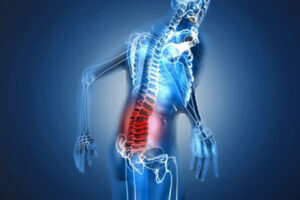
Lumbar Canal Stenosis Treatment in Siliguri
Lumbar Canal Stenosis Treatment in Siliguri , often referred to as spinal stenosis, is a condition characterized by the narrowing of the spinal canal in the lower back. This narrowing can put pressure on the spinal cord and nerve roots, leading to pain, numbness, weakness, and reduced mobility. In this article, we will explore various treatment options and considerations for lumbar canal stenosis.
 1. Conservative Treatments:
1. Conservative Treatments:
Physical Therapy: Physical therapists can develop tailored exercise programs to improve flexibility, strengthen the core and back muscles, and promote better posture. These measures can help relieve symptoms and enhance overall spinal health.
Medications: Over-the-counter pain relievers (e.g., ibuprofen) or prescription medications (e.g., muscle relaxants) may be used to manage pain and reduce inflammation.
Lifestyle Modifications: Maintaining a healthy weight and avoiding activities that worsen symptoms are crucial. Improving ergonomics at work and home can also alleviate discomfort.
Assistive Devices:
Lumbar braces or corsets can provide support and stability, reducing pain and helping patients stay active.
2. Injections:
Epidural Steroid Injections ( Lumbar Canal Stenosis Treatment in Siliguri ): These injections can deliver anti-inflammatory medication directly to the affected area, providing pain relief by reducing swelling and pressure on the spinal cord and nerves.
3. Surgical Interventions:
Laminectomy: In cases where conservative treatments are ineffective or if the patient’s condition worsens, a laminectomy may be considered. This surgical procedure involves removing the back part of the vertebra (lamina) to create more space within the spinal canal.
Spinal Fusion: In some cases, especially when there is instability of the spine, spinal fusion may be performed. It involves fusing two or more vertebrae to reduce pain and maintain spinal stability.
Minimally Invasive Surgery: Some surgeons can perform minimally invasive procedures to treat lumbar stenosis, which may result in smaller incisions, less tissue damage, and quicker recovery times. These procedures may include minimally invasive laminectomy or decompression.
4. Regenerative Medicine:
Platelet-Rich Plasma (PRP) Therapy: PRP injections can promote healing and reduce inflammation in the affected area, potentially providing relief for some individuals with lumbar stenosis.
5. Alternative Therapies:
Acupuncture: Acupuncture can help manage pain and improve overall well-being by stimulating specific points on the body.
6. Physical Modalities:
Chiropractic Care: Chiropractic adjustments can help with spinal alignment and may offer relief from certain lumbar stenosis symptoms.
7. Psychological Support:
Chronic pain from lumbar stenosis can take a toll on mental health. Psychological therapies like cognitive-behavioral therapy (CBT) can assist individuals in coping with and managing their pain.
Conclusion:
The treatment of lumbar canal stenosis should be individualized, taking into account the patient’s specific condition, symptoms, and overall health. Consulting with a healthcare professional or a spine specialist is crucial in determining the most appropriate treatment plan. While many individuals can effectively manage lumbar stenosis with conservative measures, some may require surgical intervention to achieve the best outcome. The goal of treatment is not only to relieve symptoms but also to enhance the patient’s quality of life and functional abilities.
